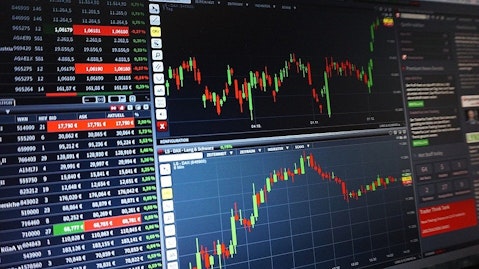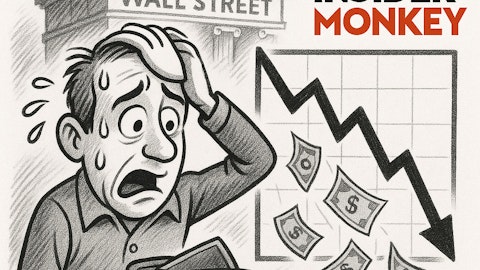Ask any experienced trader what separates someone who survives the forex market from someone who burns through their account, and they’ll likely say the same thing: proper trade sizing.
It’s one of the most overlooked concepts for new traders, but understanding lot size and its impact on your trades is absolutely essential if you want to manage risk and stay consistent over the long term.
Lot size doesn’t just determine how much you might make or lose. It’s connected to your account size, the value of each pip, your leverage, and the overall exposure you’re taking on with every position. If you’re not thinking about lot size carefully, you’re not really managing risk; you’re gambling.

Understanding a Lot in Forex
So, what is lot size? In forex trading, a lot is simply the unit used to measure the size of your position. It defines how much of a currency pair you’re buying or selling.
Unlike stocks, where you trade shares, forex uses lots. And there are several types to be aware of:
- Standard lot – 100,000 units of the base currency
- Mini lot – 10,000 units
- Micro lot – 1,000 units
- Nano lot (rare, but sometimes offered) – 100 units
If you trade EUR/USD, one standard lot means you’re trading €100,000 worth of the pair. A mini lot would be €10,000, and so on. These sizes directly impact your pip value, which is why lot size plays such a big role in risk management.
How Lot Size Affects Pip Value
Every pip movement in the forex market translates to either a gain or a loss. But how much each pip is worth depends entirely on your lot size.
In most currency pairs, one pip equals 0.0001. That pip’s dollar value changes with the size of the lot:
- A standard lot means each pip is worth around $10
- A mini lot brings it down to around $1 per pip
- A micro lot is closer to $0.10 per pip
Let’s say you open a long trade on GBP/USD using a standard lot. If the pair moves 50 pips in your favor, you’re up about $500. If it goes the other way? You’re down the same amount. Now, imagine you used a micro lot; that same move would only result in a $5 gain or loss.
This difference matters. If you’re learning, testing new strategies, or trading during periods of high volatility, keeping your lot size smaller can be a smart way to protect your capital while still staying engaged.
Lot Size, Leverage, and Margin Requirements
Lot size doesn’t exist in a vacuum. It’s closely tied to how much leverage you’re using and how much margin you need to hold the position open.
Let’s say you’re trading one standard lot, which is 100,000 units. You’re not typically required to put up that full $100,000. With 100:1 leverage, you’d only need $1,000 of your own money to control that position.
Sounds great, right? It can be, but it’s also risky.
Just as leverage boosts your potential gains, it magnifies your losses too. A small move in the wrong direction can take out a big chunk of your account if you’re over-leveraged and trading too large.
This is why lot size and leverage need to work together. Just because your platform lets you open a big position doesn’t mean you should. A lot of traders run into trouble here, as they don’t realize how quickly things can move against them, especially during high-impact news or volatile sessions.
Choosing the Right Lot Size for Your Account
There’s no single rule that fits every trader, but there are smart guidelines to help you stay in control.
A widely used approach is the 1% rule, i.e. don’t risk more than 1% of your account on any single trade. That keeps losses manageable and gives you breathing room if the trade doesn’t go your way.
Here’s how it plays out in practice:
Say you have a $5,000 account. One percent of that is $50. Now, imagine the trade you’re considering has a stop-loss of 25 pips. To stay within your risk limit, you want each pip to be worth no more than $2.
That brings you to a mini lot, maybe just under, depending on the pair.
This method lets you stay active in the market while keeping your exposure in check. It’s a more sustainable way to trade, especially if you’re looking for consistency rather than quick wins.
Volatility and Lot Size: Why Flexibility Matters
Some currency pairs move faster than others. GBP/JPY, for example, can swing hard in a short time. EUR/USD tends to be more stable. Your lot size should reflect the personality of the pair you’re trading.
If you’re in a fast-moving market, trading a smaller lot gives your setup more breathing room. You’re less likely to get stopped out by a normal fluctuation. On calmer pairs, you might have more room to size up without taking on extra risk.
You’ll also want to consider:
- The size of your stop-loss
- How strong your trade setup is
- The current market environment
- How many trades you already have open
Being able to adjust your lot size based on context, not just habit, is a key skill. The best traders adapt!
Lot Sizing and Trade Psychology
Here’s something most trading guides don’t talk about: how much lot sizing affects your mindset.
Trading too large can make even a solid setup feel stressful. When too much is on the line, you’re more likely to hesitate, exit early, or panic if the market moves against you. One bad trade can undo days of progress, and that kind of pressure affects decision-making.
On the flip side, if your lot size is too small, you might not take the trade seriously. You’ll get bored or careless. Either way, performance suffers.
The sweet spot is somewhere in the middle. You want enough on the line to stay focused, but not so much that you start second-guessing everything. Lot sizing helps you find that balance.
Why It’s a Vital Part of Every Strategy
Lot sizing isn’t just a beginner concept. It’s part of every professional’s routine. Whether you’re day trading, swing trading, or managing longer-term positions, how much you risk per trade always matters.
Market conditions shift. Account balances grow (or shrink). Volatility picks up, then cools down. Your lot size should adjust with all of that.
Smart lot sizing allows you to:
- Scale positions responsibly
- Manage risk more precisely
- Stay consistent, even during drawdowns
- Avoid emotional overreactions to normal market moves
Traders who ignore lot sizing often run into trouble without realizing why. Those who pay attention to it tend to trade with more confidence and less regret.
Lot Size in Action: A Quick Example
Let’s say you have a $10,000 account and want to risk just 1% on a trade, that’s $100.
You’ve spotted a setup on EUR/USD with a 30-pip stop-loss. To keep within your limit, your pip value can’t exceed $3.33.
That works out to about one-third of a standard lot, or three mini lots.
Now, imagine you only trade micro lots. You’d need 33 of them to reach the same risk level, something that’s easier to manage if your platform allows partial lot sizes.
This is where math meets discipline. Taking a minute to run these numbers before every trade helps you avoid sizing errors and keeps your risk plan on track.
Getting Started with the Right Habits
If you’re new to forex or still fine-tuning your process, lot sizing is a great place to start. It connects directly to risk management, trade planning, and discipline… three of the biggest factors in long-term success.
Many traders start with a demo or smaller account, using flexible sizing to build confidence. Many platforms offer calculators or trade tools to help determine the right lot size based on your account and trade setup.
The sooner you build a habit of checking your sizing before you enter a position, the more consistent your results will become, regardless of market conditions.
Small Size, Big Impact
Knowing how to place a trade isn’t enough. Knowing how much to trade is just as important, and often more impactful in the long run.
Lot sizing doesn’t need to be complicated, but it does need to be deliberate. Every position you open affects your risk exposure, your drawdown potential, and your ability to stay objective. Get that part right, and you’ll already be ahead of most traders.





